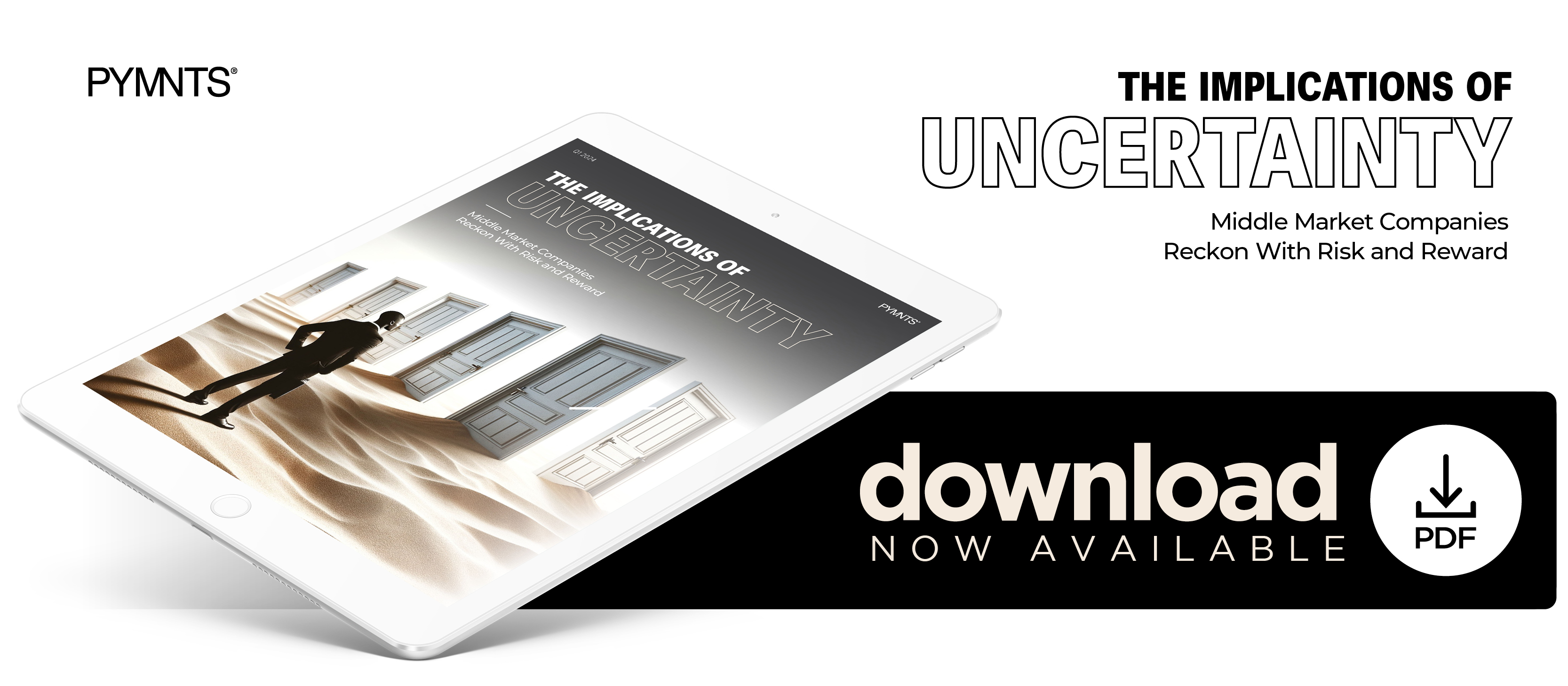Customer Data, Technology Unlock Profitability Amid Uncertainty

Companies can leverage customer data and use technology to prosper in uncertain times, i2c Global Head of Operations John Bresnahan writes in the new PYMNTS eBook, “The Implications of Uncertainty.”
The direction of the United States and world economies is uncertain and geopolitical risks seem to be growing. What are financial institutions to do when facing such uncertainty? There are strategies that can be applied to help organizations not only survive such times but excel.
Background
The U.S. economy defied recession fears and achieved a soft landing in 2023 and throughout the first quarter of 2024. Inflation shows signs of coming under control due to the Fed’s restrictive activities. The surprise has been stronger than expected GDP growth. The forecast for the remainder of 2024 looks stronger than recently anticipated. The Fed will be challenged to get the timing right for lowering rates and must consider the risks of lowering too soon or too much against the risks of waiting too late or lowering too little.
Geopolitical risks remain a threat to global supply chains, which creates greater uncertainty about the future path of inflation as firms work to diversify their supply chains. Despite these headwinds, organizations can and do achieve growth in revenue and profitability during such times.
Core Strategies
The following core strategies help organizations grow even during periods of high uncertainty:
- Assess which stage you are in and focus accordingly: Start Up, Ramp Up or Momentum. Each stage requires a different focus and set of tactics. For example, during the “Start Up” phase, you focus on customer acquisition versus during the “Ramp Up,” when you may focus on growth and profitability, or “Momentum,” when you may need to focus on customer retention and engagement. Aligning your focus with the most critical activities, given your organization’s stage in its lifecycle, is crucial.
- Segment existing customers and mine customer behavioral data. Winning organizations drive deep insights into customer behavior, allowing for a holistic view of customer needs. Companies should define which behaviors are profitable or unprofitable and then implement strategies to migrate unprofitable customer behaviors to profitable ones.
- Focus on niche market segments and personalization to grow your business. Customers today expect seamless, personalized, and convenient experiences. Organizations that want to remain competitive must continuously adapt to customers’ evolving expectations and develop personalized offerings that resonate with their target market.
Additional Strategies
In addition to leveraging customer and market data, leading organizations use advanced technologies to deliver digital user experiences, manage risks, and improve operations. Organizations do not have to do this independently but can choose partners with innovative technical capabilities. For example, at i2c we use machine learning, artificial intelligence (AI) and natural language processing (NLP) to ensure our clients realize the benefits these technologies offer, including:
- Fraud detection: Machine learning, predictive analytics and AI-powered fraud detection are used to assess data in real time, identify suspicious activities and protect against fraud.
- Compliance: Advanced technologies such as NLP are employed to automate compliance checks and ensure that clients meet regulatory requirements, reducing compliance risks.
- Operational efficiency and quality: Processes are streamlined, and routine tasks are automated to enhance operational efficiency, reduce the risk of errors and failures and improve quality.
Summary
During uncertain times, companies can employ effective strategies, either on their own or through partnerships, that leverage customer data and utilize technologies to prosper.


